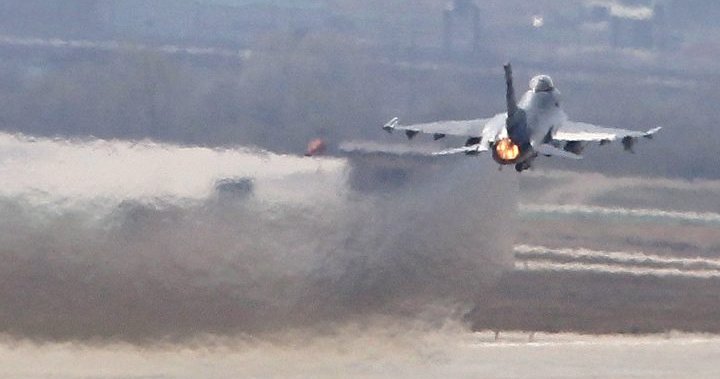The U.S. is increasing its use of fighter jets in the strategic Strait of Hormuz to protect ships from Iranian seizures, according to a senior defense official. The official stated that the U.S. is growing more concerned about the ties between Iran, Russia, and Syria in the Middle East.
Speaking to Pentagon reporters, the official announced that F-16 fighter jets will be sent to the Gulf region this weekend to support the A-10 attack aircraft that have been patrolling the area for over a week. This decision comes after Iran attempted to seize two oil tankers near the strait last week, even opening fire on one of them.
The defense official, who chose to remain anonymous, expressed that deploying F-16s will provide air cover for ships traversing the waterway and increase the military’s presence as a deterrent to Iran. The U.S. Navy confirmed that on both occasions, the Iranian naval vessels retreated when the USS McFaul arrived on the scene.
Moreover, the official stated that the U.S. is considering various military options to address increasing Russian aggression in the Syrian skies. The official did not disclose the details of these options but assured that the U.S. will not surrender any territory and will continue its anti-Islamic State missions in the western part of the country.
The official explained that the heightened Russian military activity since March is a result of the cooperation and coordination between Moscow, Tehran, and the Syrian government, who are pressurizing the U.S. to withdraw from Syria. The official emphasized that Russia depends on Iran for support in the war in Ukraine, while Iran wants the U.S. to leave Syria so it can easily supply lethal aid to Lebanese Hezbollah and threaten Israel.
The official further added that the U.S. has observed increased cooperation, collaboration, planning, and intelligence sharing between mid-level Russian and Iranian Quds force leaders in Syria. These efforts are aimed at forcing the U.S. to withdraw its troops from Syria. Currently, there are approximately 900 U.S. forces in the country who conduct missions against Islamic State group militants.
While the U.S. does not believe that Russian aircraft plan to attack its troops or shoot down manned aircraft, there are concerns about Russian pilots shooting down Reaper drones. The official noted that Moscow seems to believe that such an action would not provoke a strong U.S. military response, citing a previous incident in March where a Russian warplane damaged a U.S. surveillance drone.
According to the official, U.S. and Russian military commanders frequently communicate through a deconfliction phone line to avoid unintended clashes in Syria. However, tensions often rise during these conversations as both sides debate ongoing operations. The official provided an example where the Russians would declare a certain area as a restricted operating zone for military exercises, while the U.S. would assert its counterterror mission against the Islamic State group and state its intention to fly in that area. This often results in heated exchanges between the two parties.
In the most recent incident, a Russian aircraft flew repeatedly over the at-Tanf garrison in eastern Syria, where U.S. forces are present. The official confirmed that the Russian An-30 aircraft was collecting intelligence on the base, but the U.S. did not take any direct action.

